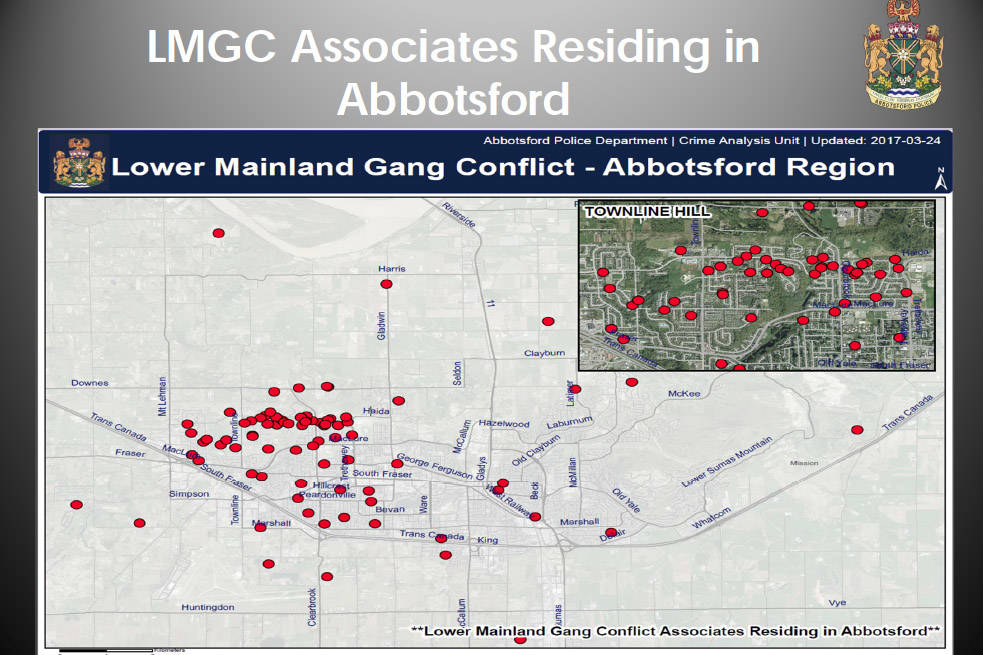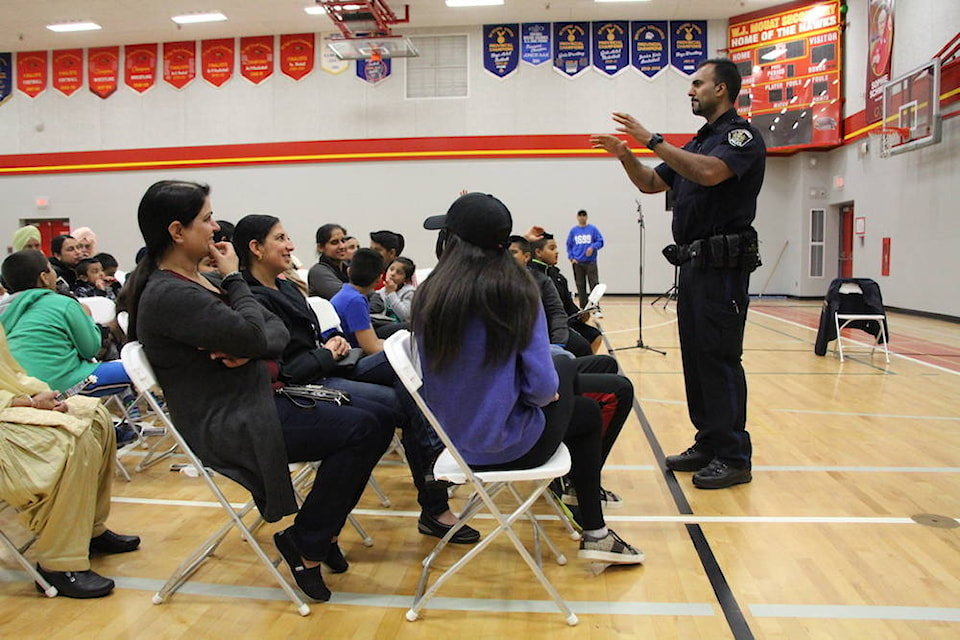The majority of young people involved in the current Lower Mainland gang conflict reside in Abbotsford, Police Chief Bob Rich told the crowd attending a community forum on Friday night.
Later in the evening, a map was shown with approximately 70 red dots to indicate the number of gang members living in Abbotsford.
But Rich – and other speakers – said police are taking a proactive approach to reducing those numbers and preventing young people from becoming involved.
“How do we stop losing that young person from our community? We are going to have to work very hard, as a community, to stop our young people from having their lives destroyed because, trust me, the gangs are actively recruiting your young people to get them to join their group,” Rich said.
The Abbotsford Police Department (APD) hosted the forum, held mainly in Punjabi, at W. J. Mouat Secondary in response to the gang conflict, which first began locally three years ago.
At that time, the APD called it the Townline Hill conflict, named for the area of west Abbotsford where most of the violence was occurring.
The battle has involved young men, primarily of South Asian descent, who are battling over drug territory.
The conflict has resulted in numerous shootings and more than half a dozen murders in Abbotsford alone.
In recent months, police have begun referring to the issue as the Lower Mainland gang conflict because it has spread across the region and even into other provinces.
Speaking at the forum, Abbotsford Police Sgt. Dan Culbertson said a disproportionate number of the gang members live with their families.
“Therefore, the violence poses a significant safety risk to both the individual, the families and the community as a whole,” he said.
Culbertson said the APD has taken a number of steps to address the violence, including street checks of offenders, curfew checks, home visits, targeted area patrols, arrests/seizures and checks of bars, restaurants and gyms.
Sgt. Vic Gamboa, who heads the gang enforcement team, said: “We spend time where we believe we’re going to find them (gangsters).”
Sgt. Jag Khosa with the regional Combined Forces Special Enforcement Unit, said police have become more proactive in their approach to gangs.
He said the “code of silence” that initially existed among gangsters’ family members is no longer an issue.
“Those barriers are now gone … The community is now talking to us.”
Khosa shared a story of how young men become attracted to the gang lifestyle. He met for coffee with a 17-year-old boy who was entering the drug trade, and asked him why he was doing so.
“He said he wants to make lots of money … ‘I want a penthouse in downtown Vancouver. I want a fancy car. I want 15 girls around me.’ ”
The teen told Khosa that he planned to make $6,000 a week selling drugs.
“We know he’s not going to make that money. He’s going to die or he’s going to go to jail. The people he’s working for, why would they want him to make that kind of money?”
Khosa urged the community to continue to work together in reporting and preventing crime.
“We’re all working together – and we have to work together. There is no other way.”
Gamboa said officers are available to meet with concerned family members at any time to discuss a loved one, and arrangements can be made to meet discreetly.
Anyone wanting to talk or who needs help or advice can call 604-864-4777 or email helpyouth@abbypd.ca.

